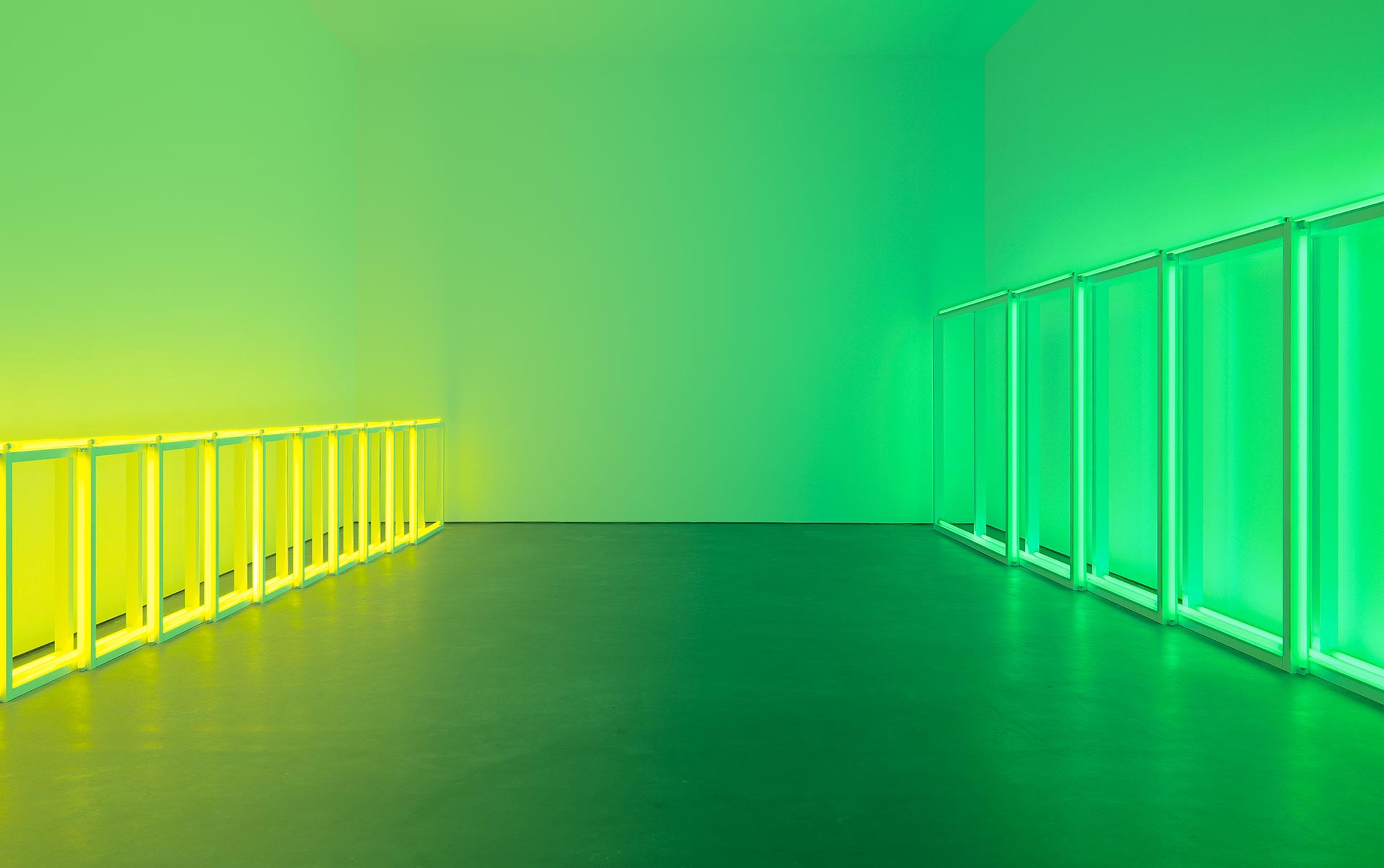West Bund Art & Design

Closed
November 7—11, 2018
Location
West Bund Art Center
2555 Longteng Avenue, Xuhui District
Shanghai
Booth
A126
Links
David Zwirner is pleased to participate in West Bund Art & Design (http://westbundshanghai.com/index.php/English) (Booth #A126). The gallery will present untitled (to Sonja), 1969, by Dan Flavin (https://www.davidzwirner.com/artists/dan-flavin) (American, 1933–1996).
Preview: Wednesday, November 7
Fair: Thursday, November 8–Sunday, November 11
From 1963, when he conceived the diagonal of May 25, 1963 (to Constantin Brancusi), a single gold, fluorescent lamp installed diagonally on a wall, until his death in 1996, Dan Flavin produced a singularly consistent and prodigious body of work that utilized commercially available fluorescent lamps to create installations (or "situations," as he preferred to call them) of light and color.
Dramatically bathing the space in which it is installed in yellow and green light, untitled (to Sonja) is a rare two-part "barrier" by Flavin. The dedication is to the artist’s first wife, Sonja (born Sonja Severdija). Here, rectangular units of colored fluorescent tubes form two interior barriers that begin in the corners of the entrance walls of the space and extend to the far end of the room. Like many of Flavin’s works, this installation makes use of spatial points of intersection, in this case the corners of a room, as its structural starting point, altering space with colored light and physically modifying the viewer’s perceptual experience of a room.
The work was first shown as Flavin’s contribution to the significant group exhibition Spaces at The Museum of Modern Art, New York, from 1969 to 1970. Organized by Jennifer Licht, the show included works by artists, as the press release noted, "whose common interest lies in an encompassing spatial experience as the primary condition of the work of art."
Flavin’s barriers, the first of which was executed in 1966, are among the artist’s most significant bodies of work. As site- specific, modular, and serial structures, these works demonstrate Flavin’s centrality to minimal and conceptual art movements of the 1960s and 1970s. In their immersive relationship to perception and the surrounding architecture, the artist’s barriers moreover count among the earliest examples of what is now commonly referred to as "installation art."
Image: Dan Flavin, untitled (to Sonja), 1969